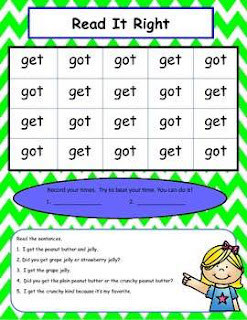How to Pinpoint and Prioritize Part 2
Several years ago I began working with a first grader who was almost on grade level, but wasn't decoding accurately. We began tutoring sessions in May and worked throughout the summer on decoding. We used the Break It Blend It Cards (cards that help children see where to break the words so they can practice breaking words aprart and blending them back together-ch art, ch arm, sh ark,
sh arp). Another area of focus for the tutoring sessions was increasing her high frequency word vocabulary. As her vocabulary grew, so did her confidence.
Second grade began and she continued to work very hard at learning new words and practicing breaking and blending words. She also developed very strong comprehension skills using context clues, picture clues, and predicting. She made it through second grade without too much difficulty.
Then came third grade with longer and more complex texts and she hit a wall. When she looked at the longer texts with fewer pictures and more complex decoding patterns, she really began to struggle. This was a diligent reader who never gave up. However, the reading required for social studies, science, and math combined with language arts overwhelmed her.
Obviously, she had more going on than confusions or not understanding patterns. Testing confirmed that she did, so we had to find a way for her to still be a successful reader. She had developed a large sight word vocabulary and learning words was easier for her than decoding. This was a strength for her and an effecitve way to overcome her weakness.
We assessed the words she knew and very carefully chose words she needed to learn immediately to be successful by combining words for reading, math, and the content areas. She knew what she had to do to be successful and felt empowered.
Developing a large sight word vocabulary can help readers who can't decode effectively.
If the river current is too strong to swim across, find a boat or build a bridge.
Learning to read is very complex. There are many different reasons children struggle to become effective readers. Start by looking for gaps in early reading behaviors. Often, they just have confusions or gaps.
Teaching Tip
Some of you may ask why we didn't test her earlier for this decoding difficulty. With young children the "normal range" is huge because young children develop at different rates and the results would not have shown a discrepency. Most learning disablities can't be diagnosed until around third grade.
Keep calm and teach on!
Karen




